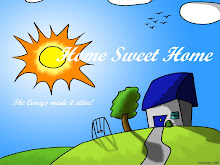Rugby UNION
 I have never really tried understand the conflict in Ireland before however sitting and watching a game of rugby this weekend between Ireland and England (part of the 6 Nations contest) I began to get a taste of some of this history.
I have never really tried understand the conflict in Ireland before however sitting and watching a game of rugby this weekend between Ireland and England (part of the 6 Nations contest) I began to get a taste of some of this history.
While Ireland may play as one team it was interesting to watch the Irish National Anthem (Amhrán na bhFiann) being played with several players not singing. Many Nationalists regard the song as the national anthem of the whole of Ireland, and it is therefore sung at football games in the Republic of Ireland. Unionists, however, reject this use of Amhrán na bhFiann and dont sing. At international games played by the all-Ireland Irish Rugby Football Union team the song Ireland's Call is sung as well as.
This game was equally unusual because of the venue. Croke Park was an exclusive citadel for Ireland's traditional sports, rich in the folklore of hurling and Gaelic football. Even as recently as last year it was thought that the twain would never meet 'twixt the likes of hurling and rugby union’.
What makes this event even more emotionally charged was it was a game against England. This was the first time an English team had set foot in the stadium and would be the first time that ‘God save the Queen’ would echo out over the field.
And Croke Park had its own direct experience of the horrors of previous violence that faced this land. It is scarred by the events of November 19, 1920, the scene of Bloody Sunday when British paramilitaries gatecrashed the stadium. Tipperary were supposed to be playing Dublin. Instead 14 people were shot dead by British paramilitaries including the player Mick Hogan.
So this momentous match was viewed by some observers here as a watershed, a crossing for the troubles-free modern Ireland accepting its English neighbours. Even in the pub where I watched the game there was a surreal atmosphere as Irish and English supporters stood side by side singing their national anthems.
Tickets were selling for $4,000 Australian dollars and there wasn’t an empty seat in a stadium that holds 82,500. In a stadium so central to Ireland’s cultural identity it was promising to think that future battles would only occur on the sporting filed. As an Ozi watching the game, it has given me new understanding not only on the passion they have for sport but the immense history that exists in this place.



No comments:
Post a Comment